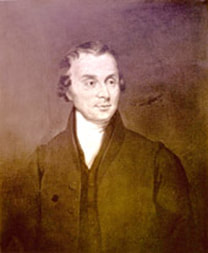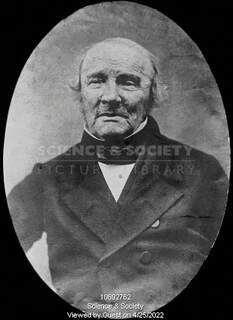About Luke Howard
|
Namer of Clouds and Father of Meteorology 28 November 1772 - 21 March 1864 Luke Howard, the Namer of Clouds, is commemorated with the only English Heritage Blue Plaque in Tottenham.
Luke Howard is also known as the Father of Urban Climate Studies for his detailed observations over many years of the weather and cloud formations in Tottenham. His scientific work changed the way we understand the climate around us. |
|
Luke Howard was sent to boarding school in Burford, Oxfordshire and used to say that ‘he learnt too much of Latin grammar and too little of anything else.‘ But even then he had an observing eye and began to notice the appearances of the sky and forms of clouds. He was fascinated by the violent volcanic eruptions at Laki in Iceland which resulted in sunsets blazing through clouds, and overcast skies which led to unusually cold winters in Britain from 1783-1785.
He would have been aware of the summer hailstorm in 1788 which destroyed crops throughout the countryside resulting in serious food shortages which brought the population into the streets when the price of bread rose sharply the following spring. As a young man Luke Howard was one of a circle who in March, 1796, formed themselves into an Association called the Askesian Society, for the discussion of scientific questions. Among the Members were William Allen, William Phillips, Alexander Tilloch, and H. Pepys. The Society was merged into the Geological Society in 1806. It was in a short essay read in December 1802 to the Society, and published as On the Modification of Clouds in 1803, that Luke Howard, proposed his classification and nomenclature of the clouds; the system he outlined is still in use today. |
|
And it is from their home on Tottenham Green that Luke Howard, with the support of Mariabella, made daily recordings of the weather. Using the data obtained from the instruments in their garden in 1818 – 1820 he published The Climate of London in two volumes updating it with a revised edition in 1833.
His daily barometric pressure readings are among the earliest consistent scientific observations recorded. In 1837, the year he returned to Tottenham from Ackworth in Yorkshire, he published Seven Lectures on Meteorology. Luke Howard was elected a Fellow of the Royal Society for his contributions to meteorology in 1821 and he joined the then, British (now Royal) Meteorology Society in 1850. |
|
Linnean Society Podcast For an informative introduction to the life of Luke Howard listen to the Linnean Society podcast with Richard Hamblyn. Recorded for the 250 anniversary of Luke Howard's birth. The Namer of Clouds |
Luke Howard died on 21 March 1864
According to the Quarterly Journal of the Royal Meteorological Society obituary notices 30 Nov 1863 – 30 Nov 1864:
one who knew him well in the latter part of his life said:
According to the Quarterly Journal of the Royal Meteorological Society obituary notices 30 Nov 1863 – 30 Nov 1864:
one who knew him well in the latter part of his life said:
|
“Those who lived with him will not soon forget his interest in the appearance of the sky. Whether at morning, noon, or night, he would go out to look around on the heavens, and notice the changes going on. His intelligent remarks and pictorial descriptions gave a character to the scene never before realised by some. A beautiful sunset was a real and intense delight to him; he would stand at the window, change his position, go out of doors, and watch it to the last lingering ray; and long after he ceased, from failing memory, to name the ‘cirrus,’ or ‘cumulus,’ he would derive a mental feast from the gaze, and seem to recognise old friends in their outlines.”
|






